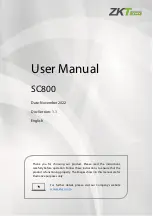
7-2
PACSystems* RX3i PROFINET Controller Manual
– December 2011
GFK-2571A
7
SNMP
The PNC
’s built-in SNMP (Simple Network Management Protocol) Server/Agent function can be
used by a third-party SNMP Client or Network Management Station to access network data.
Overview of SNMP
SNMP is a UDP-based network protocol that facilitates the exchange of management information
between network devices. An SNMP-managed network consists of three key components: managed
devices, agents, and network management systems (NMS).
A managed device is a network node that contains an SNMP agent and that resides on a managed
network. Managed devices exchange management information with NMSs via their local agent.
An agent is a network management software module that resides on a managed device. An agent
maintains a collection of management information that it provides in an SNMP-compatible format
upon request to NMSs.
An NMS executes applications that monitor and control managed devices.
The collections of management information maintained by agents and managed devices are
generally referred to as Management Information Bases (MIBs). A MIB is a collection of information
organized into a hierarchical structure where related
items are grouped together in “groups.” MIBs
are used to organize and standardize the management information on agents and can be accessed
via commands provided within the SNMP protocol.
The SNMP protocol is currently defined by five protocol specifications: SNMPv1, SNMPv2,
SNMPv2c, SNMPv2u, and SNMPv3.
NMSs use four basic classes of SNMP commands to retrieve and alter data on managed devices
The read (GET) command is used by an NMS to monitor managed devices through
examination of the values of different variables maintained within the managed device
s’
MIBs.
The write (SET) command is used by an NMS to control devices through modification of the
values maintained by the managed devices within their MIBs.
The trap (TRAP, INFORM) command is used by an NMS to get asynchronous notifications
when certain events occur on managed devices. In SNMP Version 2, traps are not set via
the protocol but are defined at the managed device by local action.
Traversal operations (GETNEXT and GETBULK) are used by an NMS to determine which
variables a managed device supports and to sequentially gather information from the MIBs.
SNMP is a well-defined protocol; additional information is available in books and the World Wide
Web.
















































